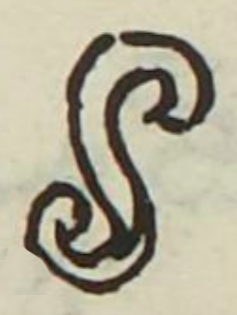Ocuil (MH526r)
This black-line drawing of the simplex glyph for the personal name Ocuil (“Worm,” attested here as a man’s name) shows what appears to be a worm (ocuilin in the shape of a capital letter S.
Stephanie Wood
This worm is much simplified compared to the worm in the Codex Mendoza, which has a segmented body, legs, and a head that includes teeth. See below. The S-shape certainly suggests movement, a worm that is wiggling. One of these S-shaped worms is segmented (see below).
Stephanie Wood
anthonio.ocuil.
Antonio Ocuil
Stephanie Wood
1560
Stephanie Wood
worms, gusanos, curvas, curves, S-shape

ocuil(in), worm, https://nahuatl.wired-humanities.org/content/ocuil
El Gusano
Daniel Chayet
Matrícula de Huexotzinco, folio 526r, World Digital Library, https://www.loc.gov/resource/gdcwdl.wdl_15282/?sp=131&st=image.
This manuscript is hosted by the Library of Congress and the World Digital Library; used here with the Creative Commons, “Attribution-NonCommercial-ShareAlike 3.0 License” (CC-BY-NC-SAq 3.0).









